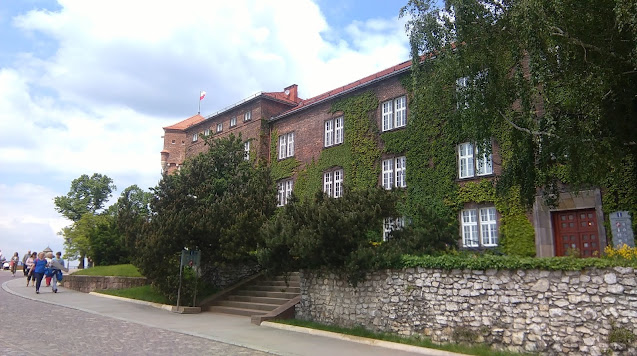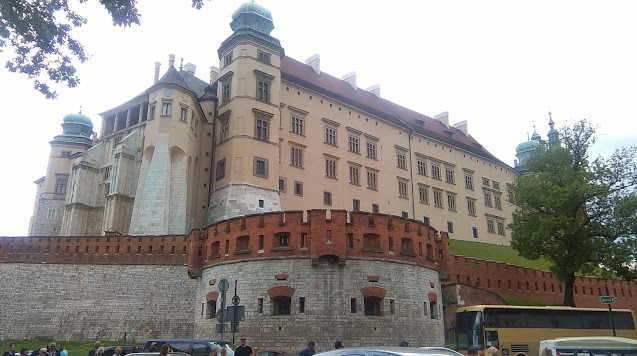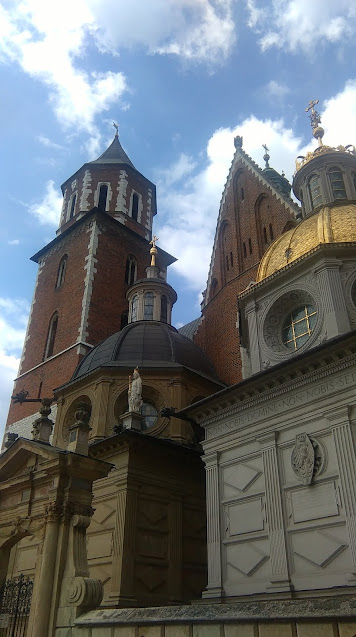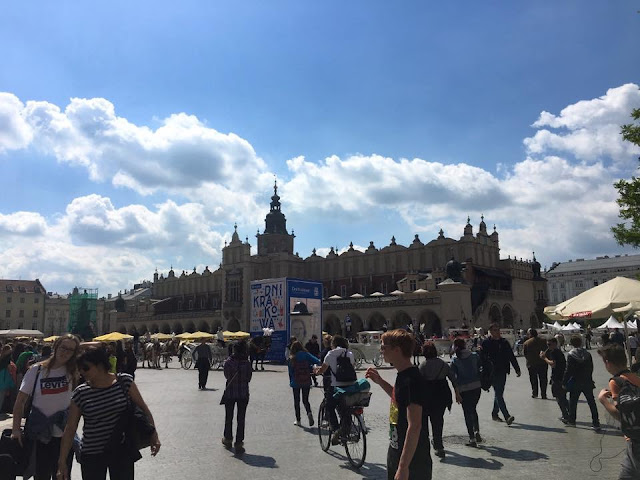Wawel is a fortified architectural complex located on a limestone outcrop on the left bank of the Vistula River in Kraków. In 1978, it was designated as a UNESCO World Heritage Site as part of the Historic Centre of Kraków.
The construction of Wawel Castle was commissioned by King Casimir III the Great. It encompasses several structures surrounding the main courtyard, designed in an Italian style. As one of the largest castles in Poland, it represents various architectural styles from the medieval, Renaissance, and Baroque periods. Among the notable buildings within the complex are the Royal Castle and the Wawel Cathedral. Some of the oldest stone structures at Wawel, including the Rotunda of the Virgin Mary, date back to 970 AD. The complex also includes wooden elements dating to the 9th century. Wawel Castle is renowned as one of the most captivating castles in Europe.
Wawel holds great historical and cultural significance for the Polish people. It served as a political and power center from the end of the first millennium AD, with its origins as the fortified castrum of the Vistulans tribe. Rulers of the Piast dynasty, such as Mieszko I, Bolesław I the Brave, and Mieszko II, chose Wawel as one of their residences. Additionally, Wawel became a prominent center of Christianity in Poland, with the construction of early Romanesque buildings and a stone cathedral serving the Kraków bishopric around the year 1000.
Until 1611, Wawel was the formal seat of the Polish monarchy. Kraków served as the capital of Poland from 1038 to 1569 and later as the capital of the Polish–Lithuanian Commonwealth from 1569 to 1596. In the 20th century, Wawel was the residence of the President of Poland. However, during World War II, when Poland was invaded, Kraków became the seat of Germany's General Government, and Wawel became the residence of Nazi Governor General Hans Frank.
The Wawel Hill, formed during the Miocene epoch, consists of Jurassic limestone from the Oxfordian age. It is characterized by karst features and numerous caves. Archaeological remains on Wawel Hill indicate human settlement since the 4th century, and evidence suggests even earlier settlements dating back to the Middle Paleolithic era, around 100,000 years BC. The location of Wawel, serving as a crossroads of important trading routes, contributed to its rapid development during ancient times.
The popular Polish myth of the Wawel dragon originates from the early history of Wawel Hill. A modern fire-breathing metal statue of the dragon, known as Smok Wawelski, stands on the lower slopes of Wawel Hill by the river. This mythical creature was said to have terrorized the local community, consuming their livestock and even young maidens until it was slain by Krakus, a legendary Polish prince. According to the legend, Krakus founded the city of Kraków and built his palace above the dragon's lair.
Wawel Cathedral
Wawel Cathedral, also known as the Royal Archcathedral Basilica of Saints Stanislaus and Wenceslaus, is a Roman Catholic church situated on Wawel Hill. With a history of more than 900 years, it serves as the Polish national sanctuary and has traditionally been the site of coronations for Polish monarchs. It is also the Cathedral of the Archdiocese of Kraków.
The current cathedral is the third structure to be built on this site. The first cathedral was constructed in the 11th century but was destroyed. The second cathedral, built in the 12th century, was unfortunately destroyed by a fire in 1305. Construction of the current Gothic cathedral began in the 14th century under the orders of Bishop Nanker.
The Cathedral features a nave with aisles, transepts with aisles, a choir with double aisles, and an apse with ambulatory and radiating chapels. The main altar, located in the apse, was founded around 1650 by Bishop Piotr Gembicki and created by Giovanni Battista Gisleni. Beneath the canopy, there is a silver coffin containing the remains of the national patron saint, St. Stanislaus. This coffin was created between 1669 and 1671, replacing the previous one that had been donated by King Sigismund I the Old in 1512 but was stolen by the Swedes in 1655.
Town Hall Tower
The Town Hall Tower is a prominent feature of the Main Market Square in Kraków's Old Town district. It is the only remaining part of the old Kraków Town Hall, which was demolished in 1820 as part of a city plan to open up the Main Square. The tower's cellars were once used as a city prison with a medieval torture chamber.
In 1967, after undergoing complex conservation work that emphasized its Gothic origins, the tower was entrusted to the Historical Museum in Kraków for management.
The entrance to the tower is guarded by a pair of stone lions carved in the early 19th century. These lions were brought to Kraków from the Morstin family's Classicist palace in Pławowice during the renovations carried out between 1961 and 1965. However, during these renovations, the bay windows on the tower's second floor were incorrectly reconstructed by Wiktor Zin, a local TV personality and architect. Above the entrance, the original Gothic portal with the city coat-of-arms and the emblem of Poland can be seen. For many years, the basement beneath the tower has served as a performance space known as the Stage beneath the Town Hall, operated by the renowned Teatr Ludowy.






























0 komentarze:
Post a Comment